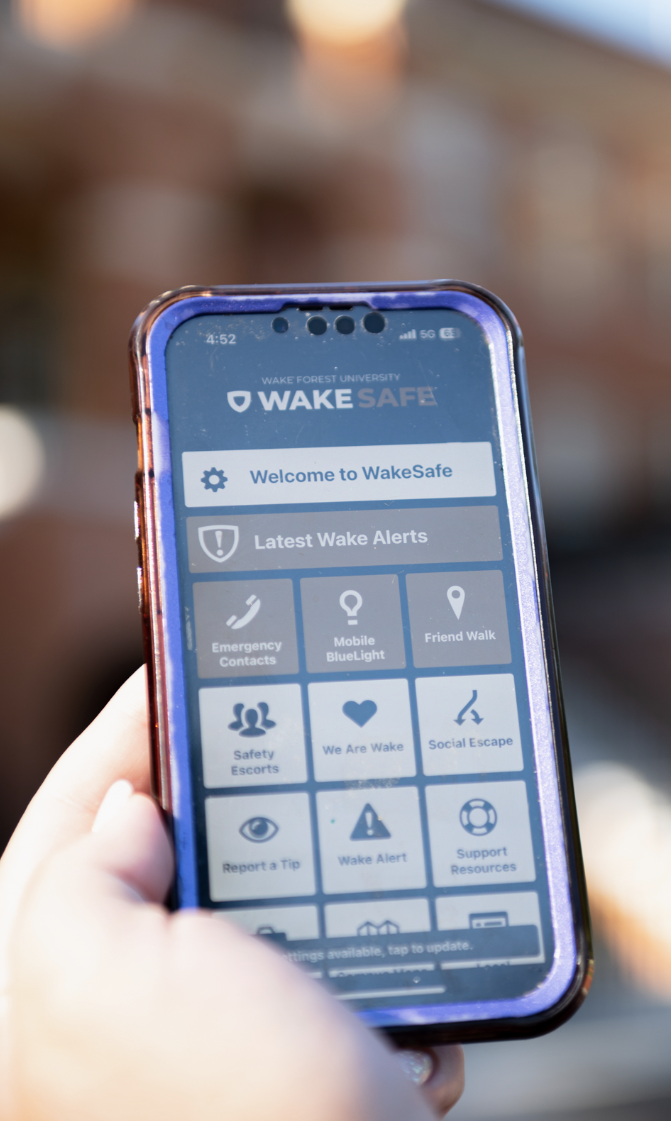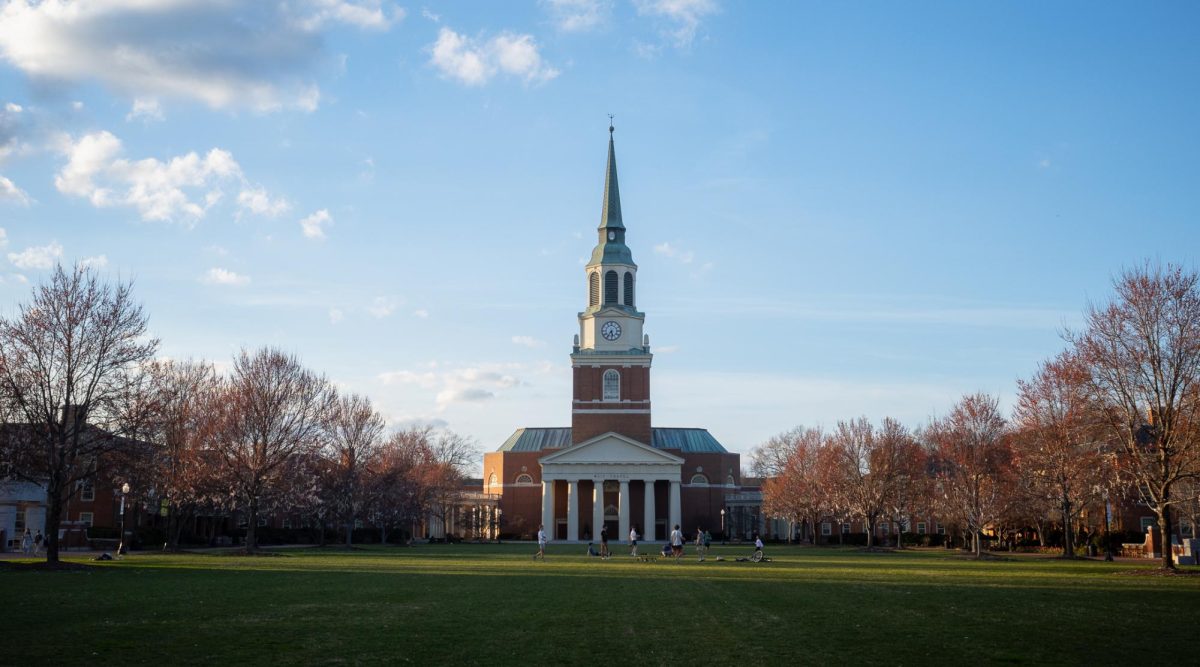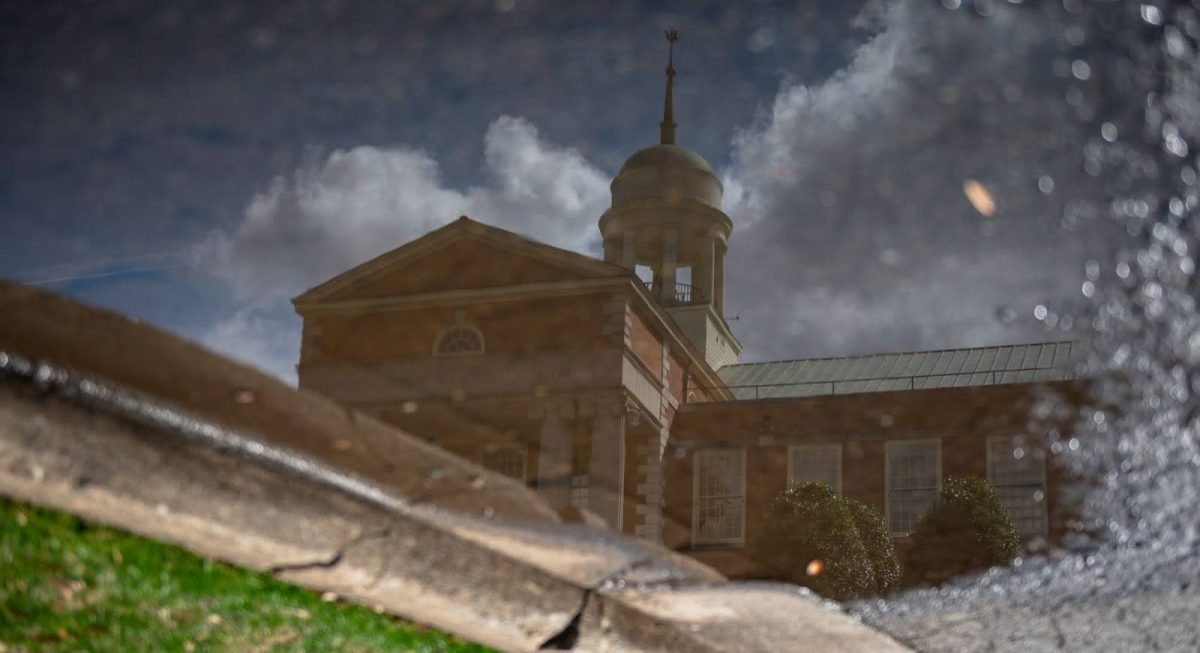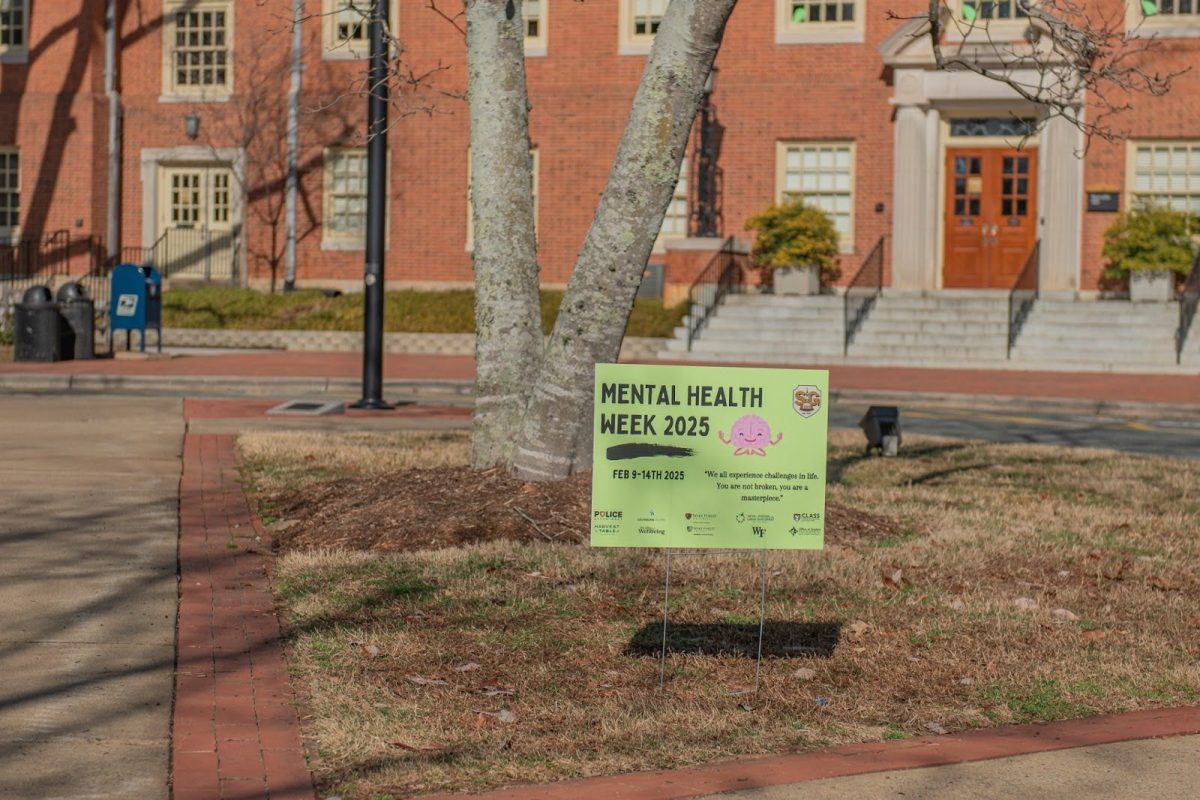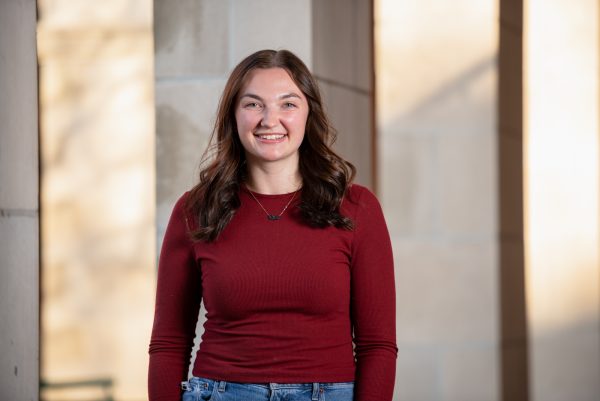For freshman Camille Rogers, campus security was a key factor when applying to colleges and universities.
“In light of some of the tragic events at other colleges and universities across the United States, it was important for me to know that I would be in a protected and safe environment,” Rogers said. “I did look into campus safety to see what certain protocols and precautions were in place for students on campus, and what has been done to keep them safe.”
Wake Forest has recently added a few elements to help students feel safer on campus — a new app called Wake Safe, an extended and updated blue light emergency call system and the addition of more than 130 addresses for campus buildings, parking lots, plazas and field locations. Previously, not all campus locations had a designated address.
“It’s been really important as a student to see where University Police is involved in all areas of campus and how they try to make their students feel important and seen,” said junior MaryAnna Bailey.
The free-to-download Wake Safe app allows users quick and easy access to the Wake Forest University Police Department. Replacing LiveSafe, the Wake Safe app displays resources such as emergency contacts, local resources and campus maps.
“The Wake Safe app makes you feel safe because it has plenty of different options and resources to use all in one place, which makes it easy to access in the time of a potential crisis or danger,” said freshman Caroline Khalaf.
On the app’s homepage, users will find four features unique to Wake Safe — Social Escape, Friend Walk, Virtual Walkhome and Mobile BlueLight.
When users activate the Social Escape feature, the device will ring as if the user is getting a phone call — giving users an excuse to leave their current situation. Once the user answers the call, an audio message will play multiple times.
“I think the social escape provides a benign way of removing yourself politely from awkward, uncomfortable or scary situations,” said Wake Forest University Police Chief Regina Lawson.
Virtual Walkhome can be found under the “Safety Escorts” tab on the homepage. Upon activation, University Police will be notified to monitor the device until the user reaches their end destination. If the user needs to call 911 at any time, they can tap the “emergency” tab.
Similarly, Friend Walk is also located under the “Safety Escorts” tab. The app will send the user’s location to the chosen contact who can monitor the user until the user signals that they have finished their trip. The user and the monitoring contact can trigger an emergency call at any time.
“I’ve been recommending [Wake Safe] to my friends and it helps me feel more safe about them knowing that the college police department will be more involved through the app,” sophomore Luke Miller said.
In efforts to keep campus connected, the Wake Safe app features a Mobile BlueLight system that sends the user’s location to and calls the WFPD, who will talk to the user on the phone. This feature is in addition to Blue Light Emergency call boxes (DEACStations) already stationed around campus.
“For example, if your phone is dead, and you’re in your car, and you are having some kind of mechanical issue or see something suspicious, you can still go to the blue light phone, press a button, and you can talk to the communication center,” Lawson said. “What this device does is it activates the location, so we know where you are. And it also activates the camera, so we can start scanning the location where you’re reportedly at.”
Alongside the mobile update, the university has upgraded Blue Light stations and added 14 around campus — five of which are at or near Deacon Place.
“I feel like it’s going to help decrease crime on Long Drive,” Miller said.
Khalaf explained that the extension makes her feel safer walking to the freshman parking lot at Winston-Salem First Church.
“I feel more comfortable walking to my car parked near this area at night because the blue light emergency call systems are there now,” Khalaf said.
To help emergency responders pinpoint accurate locations, more than 130 addresses have been added to campus. The project began in the summer of 2022 and was completed on June 14, 2023. A list of these addresses can be found on the Reynolda Campus maps.
According to Lawson, Wake Safe features are not limited to on-campus use. Many features — including Social Escape and Friend Walk — can be used at any location with cell service. Additionally, emergency calls from the app notify the closest emergency call center.
“Our vision is that every student, faculty, staff, graduate student — even [visitors] at our summer camps and conferences that come in the summer — will download this app and use it as a safety tool,” Lawson said.



